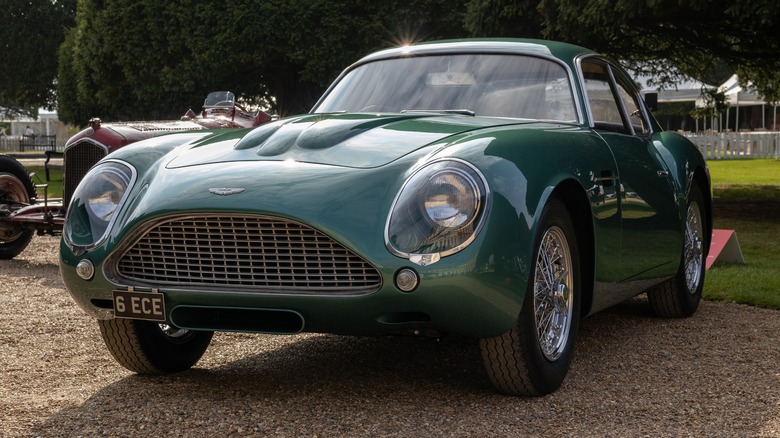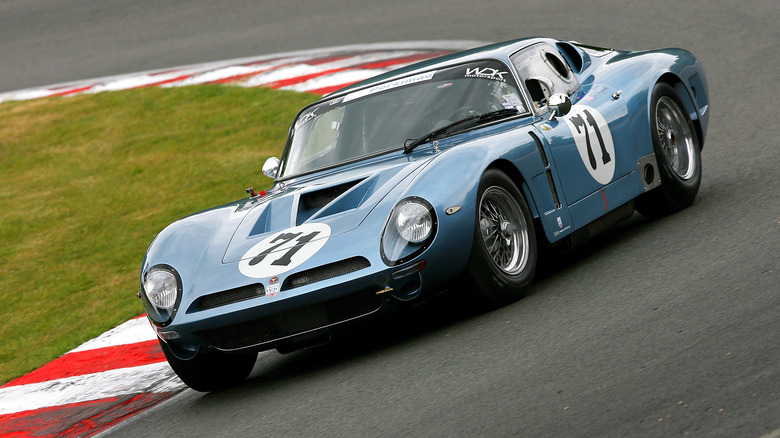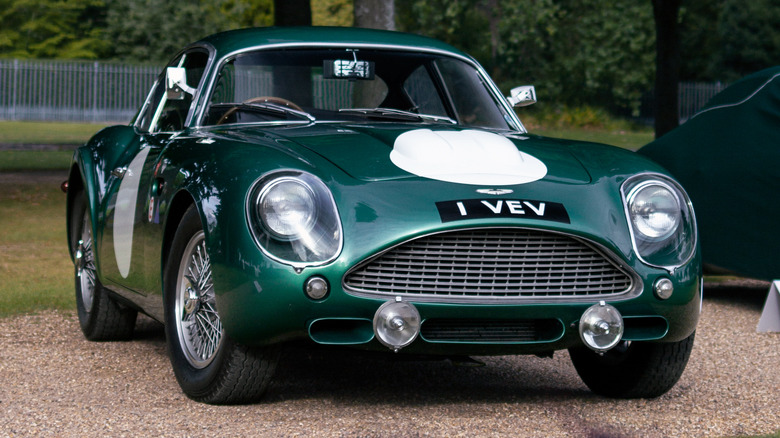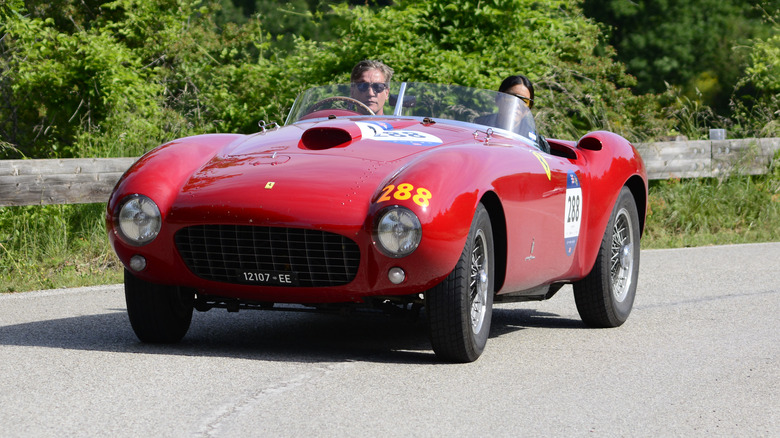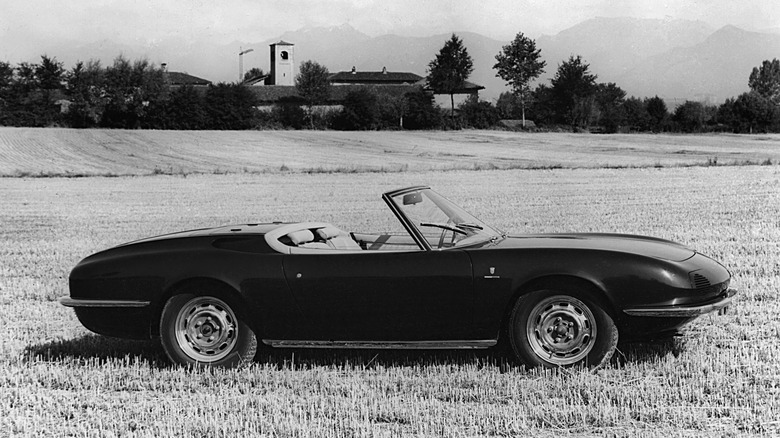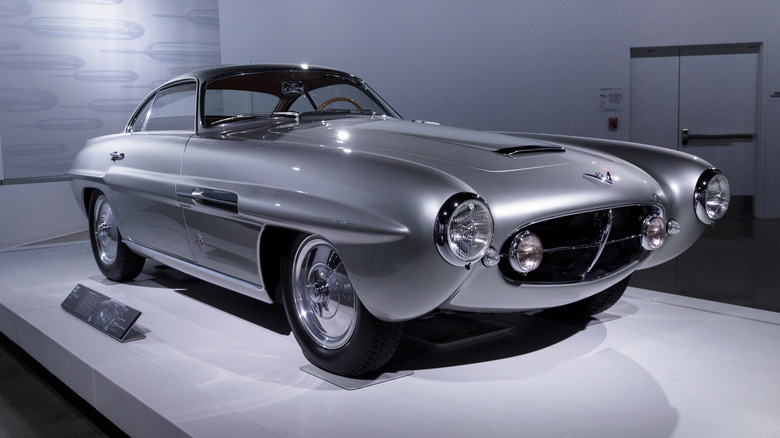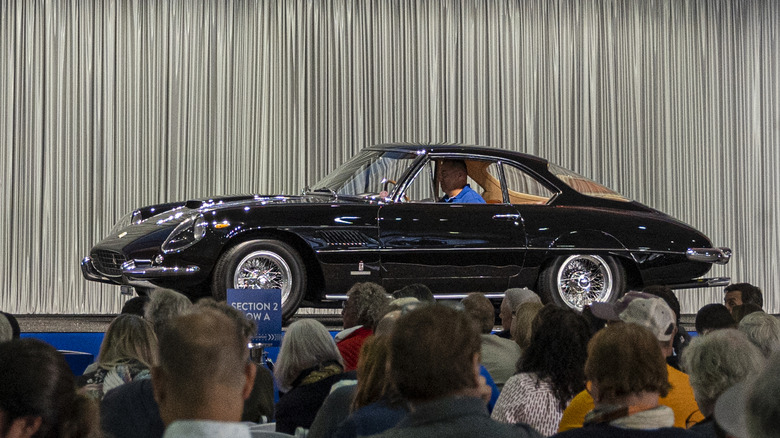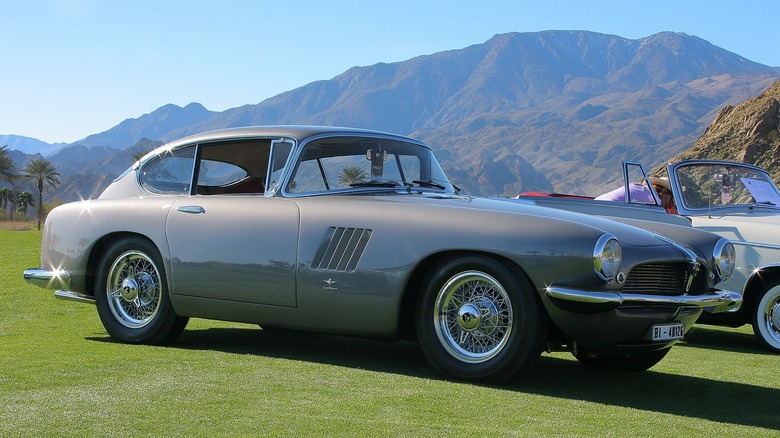8 Beautiful Classic Cars You've Probably Never Heard Of
From the best-known brands to the most obscure boutique outfits, there are models from every carmaker that eventually slip into obscurity as the industry moves on and enthusiast numbers dwindle. Often, these cars never sold in high numbers to begin with, and so end up being unceremoniously axed only to be rediscovered decades later by a new generation of car collectors. Who knows, perhaps a few of 2023's discontinued cars might even become desirable classics one day.
Among the hordes of forgotten car models from years past, some stand out as being particularly stunning and undeserving of their overlooked status. In many cases, these head-turning cars also sported groundbreaking performance to match their looks. However, even though they might be desirable among a niche group of collectors who recognize their importance, they remain forgotten about by most enthusiasts.
To highlight just how many gorgeous classics can be found by combing through the archives, we've highlighted eight of our top picks from years past. A few of these have begun in recent years to see a revival in their fortunes — even if most people have still never heard of them.
Bizzarrini 5300 GT
Giotto Bizzarrini is one of the Italian car industry's forgotten greats, with a résumé that includes some of the greatest cars ever to leave the nation. Among other things, he oversaw the designs of the Ferrari 250 SWB and 250 GTO, then after falling out with Enzo Ferrari, he designed the Lamborghini V12 engine that powered all of the brand's flagships right up to the Murcielago. In the early '60s, he decided he'd had enough of working for everyone else and set up his own car company, with its first car being the 5300 GT.
The car was an evolution of the Iso Grifo design he'd worked on a few years earlier but with further revisions to enhance performance and improve handling. The result is one of the most stunning cars of its era, although its success would prove to be short-lived. Bizzarrini managed to sell 133 examples of the 5300 GT — plus a very limited number of other models — before his company ran out of cash and closed its doors in 1969.
Although Bizzarrini himself never successfully relaunched his eponymous marque, the rights to the name and design were recently bought out, leading to a very limited run of 5300 GT continuations that are now available for nearly $2 million apiece.
Aston Martin DB4 GT Zagato
Aston Martin and Zagato have a long, storied history stretching all the way back to the DB4 GT Zagato of 1960. It was unveiled at the London Motor Show as a re-bodied, more powerful version of the DB4 GT, with a chassis made in England and then sent off to Italy for the hand-made coachwork to be fitted. Only 19 examples of the car were originally built, but much like the Bizzarrini 5300 GT, the draw of nostalgia became too great, and Aston Martin Works announced another 19 continuation cars would be made in 2019.
The continuations feature even more mechanical upgrades compared to the original car, with around 400 horsepower as opposed to the '60s car's 300 horsepower. Period cars had a 3.7L six-cylinder engine, while the continuations boast a 4.7L replica six-cylinder, built to the design of the original. Their rarity and status as one of the best-looking British cars ever made mean that original cars fetch eye-watering sums on the rare occasion they come up for auction –- at a 2021 RM Sotheby's sale, a one-of-six left-hand drive example sold for $9.52 million.
Ferrari 375 MM
With so many storied models in the brand's back catalog, there were always going to be a few classic Ferraris that slipped under the radar of most enthusiasts. One such car was the 375 MM or Mille Miglia, which was designed with Italy's most prestigious endurance race in mind. It featured a 4.5L V12 engine, which was derived from the brand's Formula 1 race car, and bodywork by Pininfarina. Exact production numbers are unclear, with Ferrari reporting that 10 spiders and "a few berlinettas" were made, all of which ended up in the hands of gentleman racers looking for a competitive edge over their rivals.
The 375 MM's rarity has kept it one of the more obscure classic Ferrari race cars, but it's highly sought after among collectors in the know. Ferraris like this spent decades as fairly worthless old race cars, with many of them left to rot in barns and garages, but when a restored example comes up for sale today, it will usually fetch seven figures at auction.
In fact, a freshly restored 375 MM was auctioned at RM Sotheby's in 2013, selling for $9.075 million and becoming one of the most expensive non-250 Ferraris ever sold in the process.
Porsche 911 Roadster Bertone
It's one of the most iconic designs in sports car history, but the Porsche 911 might have looked very different had one Californian dealer got his way. Johnny von Neumann was the owner of a very successful Porsche franchise and a key figure in making the 356 Roadster a success stateside. When the 911 was unveiled, there was a problem — it couldn't be converted into a roadster, something that Californian buyers were very keen to have. Von Neumann talked to Porsche directly about redesigning the 911 into a proper convertible, eventually persuading chairman Ferry Porsche to let Italian styling house Bertone make a single example.
The result was the 911 Roadster Bertone, and it was unveiled at the 1966 Geneva Motor Show alongside Porsche's factory open-top option, the 911 Targa. The Bertone was to be significantly more expensive than the Targa thanks to the complicated manufacturing and import process, which is likely one of the reasons that it never got approved for production. That, and the fact that Ferry Porsche was reportedly not too keen to sell a car designed by the Italians.
In the end, just one example was built, and it was the Targa that became the sole option for Californians looking for a roofless 911.
Fiat 8V Supersonic
The Fiat 8V was one of the most advanced sports cars of its day, and Ghia's Supersonic coachwork made it one of the most stunning too. A total of 114 individual 8Vs were built, with a variety of coachbuilders providing bodywork for discerning clients, but it's the Supersonic design that remains the most sought after. Just 15 examples of the 8V Supersonic were built, with a cutting-edge V8 engine designed for the gentleman racers of the era to compete against other Italian exotics from the likes of Ferrari and Maserati.
Ghia's Supersonic design had originally not been intended for Fiat at all but rather for an Alfa Romeo. An American businessman saw the design and asked the coachbuilder if it could be reworked for the 8V, with the resulting car widely considered to be the best-looking Fiat of all time and one of the best-looking Italian cars of its era to boot.
Ferrari 400 Superamerica Coupé Aerodinamico
Another beautiful but obscure Ferrari is the 400 Superamerica Coupé Aerodinamico, bodied by Pininfarina and with 17 examples originally made. The car represented the very best of what Ferrari had to offer, made for the most discerning clients and with prices significantly higher than anything else in the brand's range. With so few examples existing, it's no surprise that the cars command multi-million dollar price tags whenever they cross the auction block, although they're a fair way off the stratospheric prices that the likes of the 250 GTO have historically achieved.
That's despite the fact that they're rarer than the 250 GTO, were originally sold for more, and arguably look just as stunning as the record-breaking Prancing Horse. Every Coupé Aerodinamico was fitted with a 4.0L Colombo V12, guaranteeing the performance that Pininfarina's original moniker for the design, Superfast III, promised.
However, the rarity and value of these cars mean that anyone lucky enough to own one is unlikely to be too keen to test out that performance, despite the engine's legendary racing pedigree.
Pegaso Z-102 Touring
Spain is not well known for its sports cars, but one designer, Wifredo Ricart, tried to change that during the '50s after a fallout with his Italian former employer, Enzo Ferrari. He moved from Italy to Spain and was tasked with getting the country's car industry back on its feet after the war, but he only had one condition — the government-supported carmaker, ENASA, would let him design a sports car to beat his old boss at Ferrari.
Ricart's car was christened the Pegaso Z-102, and its original styling was criticized for its awkward proportions. In response, the designer enlisted the help of several notable coachbuilders to rework the car, with the best-looking design being that of Carrozzeria Touring. The Touring design turned the car from misfit to masterpiece, with sleek, flowing lines that resembled a scaled-down version of the Italian greats of the time.
Unfortunately, the car was never commercially successful, with only 86 examples of the Z-102 eventually sold and only a handful of those being the Touring design. Ricart was eventually forced to give up his dream of making a world-beating sports car, with Pegaso later phasing out the manufacturing of passenger cars altogether. Ironically, the brand was eventually bought out by Italian commercial vehicle manufacturer Iveco.
[Featured image by Rex Gray via Wikimedia Commons | Cropped and scaled | CC BY 2.0]
Chrysler Norseman
The Norseman show car has one of the strangest backstories of any Chrysler, as despite being hailed as one of the most futuristic, streamlined cars the brand had ever built, very few people ever got to lay eyes on it. Only a few photos of it survive, and those that do show one of the brand's most head-turning designs, with a groundbreaking pillarless roof said to be able to hold several times the weight of the car itself. This was Chrysler's vision of the future, but a tragic accident just a few weeks before its planned unveiling saw it lost forever.
The Norseman was on its way back from testing in Italy when the ship it was being transported on collided with another ship and sank, with 51 lives lost in the disaster. The car sank to the bottom of the Atlantic Ocean with the rest of the ship's cargo, where it remains today. A complete one-off, the car was painstakingly hand-built with a reported 50,000 hours of research and development going into its design. Much of that work was lost with the car.
While many of the key design elements — including the pillarless roof — would end up debuting in later production cars, the Norseman remained a mystery hidden in the depths of the ocean, with the wreck itself becoming a popular location for divers looking to catch a glimpse of this mysterious one-of-a-kind show car.
